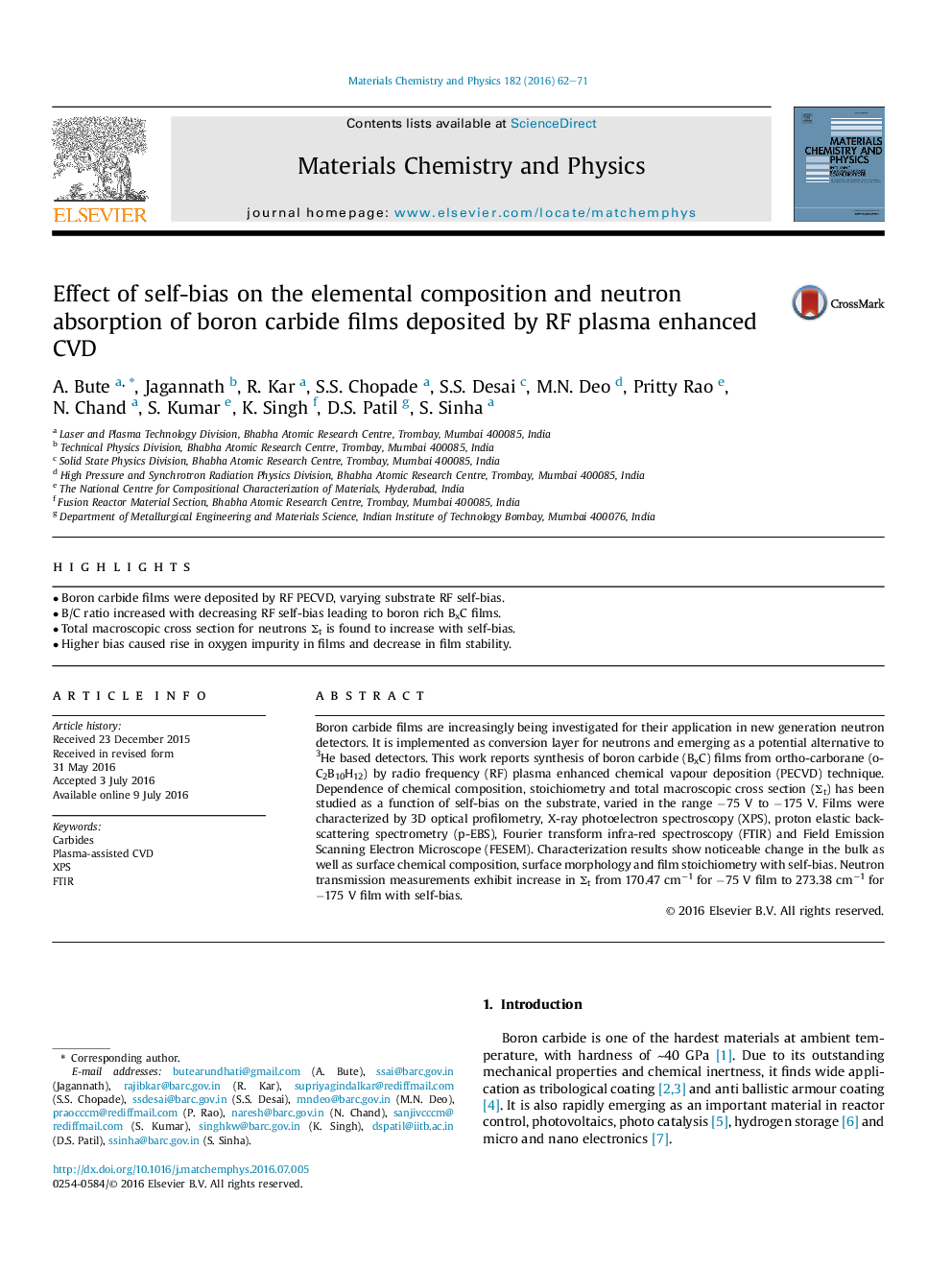| Article ID | Journal | Published Year | Pages | File Type |
|---|---|---|---|---|
| 1520373 | Materials Chemistry and Physics | 2016 | 10 Pages |
Abstract
Boron carbide films are increasingly being investigated for their application in new generation neutron detectors. It is implemented as conversion layer for neutrons and emerging as a potential alternative to 3He based detectors. This work reports synthesis of boron carbide (BxC) films from ortho-carborane (o-C2B10H12) by radio frequency (RF) plasma enhanced chemical vapour deposition (PECVD) technique. Dependence of chemical composition, stoichiometry and total macroscopic cross section (Σt) has been studied as a function of self-bias on the substrate, varied in the range â75 V to â175 V. Films were characterized by 3D optical profilometry, X-ray photoelectron spectroscopy (XPS), proton elastic backscattering spectrometry (p-EBS), Fourier transform infra-red spectroscopy (FTIR) and Field Emission Scanning Electron Microscope (FESEM). Characterization results show noticeable change in the bulk as well as surface chemical composition, surface morphology and film stoichiometry with self-bias. Neutron transmission measurements exhibit increase in Σt from 170.47 cmâ1 for â75 V film to 273.38 cmâ1 for â175 V film with self-bias.
Keywords
Related Topics
Physical Sciences and Engineering
Materials Science
Electronic, Optical and Magnetic Materials
Authors
A. Bute, Jagannath Jagannath, R. Kar, S.S. Chopade, S.S. Desai, M.N. Deo, Pritty Rao, N. Chand, S. Kumar, K. Singh, D.S. Patil, S. Sinha,
